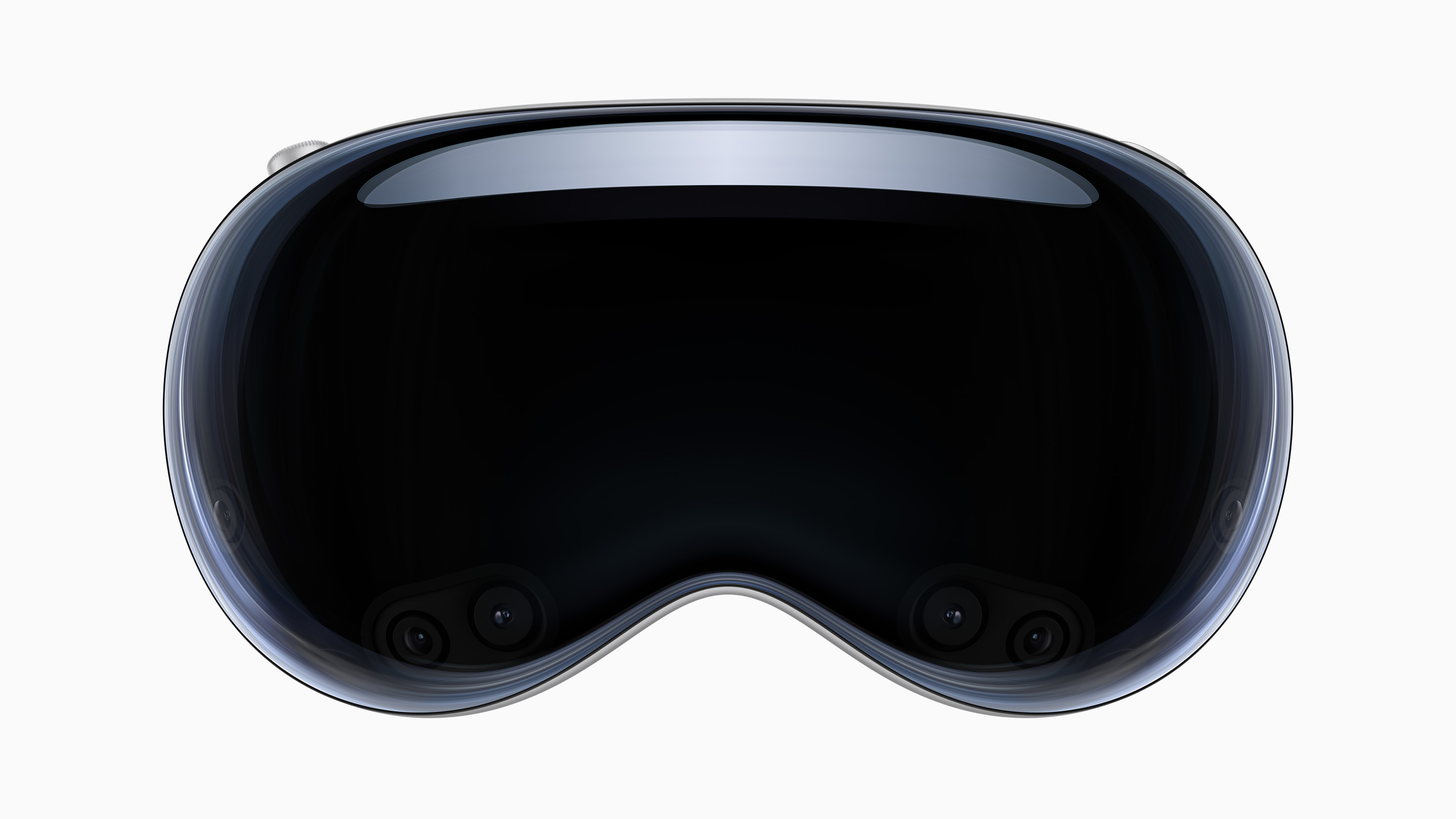06.05.2023
Apple today revealed the "Vision Pro" headset, its first mixed-reality headset device, and visionOS, an all new operating system for the device. Vision Pro is Apple's first mixed-reality device, showing

Vision Pro is Apple's first mixed-reality device, showing passthrough video of a wearer's eyes. The device features an all-new operating system that features a three dimensional interface. Experiences in Vision Pro aren't constrained to the boundaries of a display, users can make apps any scale, and place apps wherever they wish. Environments extend beyond your physical space, and control how immersed you are by turning the digital crown. Apple says that it marks the beginning of "spatial computing."
A Home view floats in the world in front of you to feel "truly present" in your room. Users use a combination of their eyes, hands, and voice to control the device. It uses eye tracking, and finger tapping and flicking to scroll or select.
The headset features passthrough video of a wearer's eyes in a feature that Apple calls "EyeSight," showing different feedback to surrounding people about what you are viewing inside the headset. It uses a lenticular OLED display to show the correct perspective to anyone viewing the wearer.
Vision Pro also allows users to connect to their Mac and expand its display in a virtual space, including alongside apps running on Vision Pro itself.
FaceTime on Vision Pro can display life-sized individuals over video calls. There is an optimized experience for viewing photos and videos. Vision Pro is also "Apple's first 3D camera," showing depth in video with Spatial Audio. The headset features a cinematic video viewing experience to scale the screen beyond the dimensions of your room. Users can create a Digital Persona to use during video calls.
Disney promoted themed experiences for sports, Star Wars, Marvel, National Geographic, and more with Apple's Reality Pro headset. Disney+ will be available for the headset upon the device's launch.
The entire front of the headset is made of polished glass that flows into a lightweight aluminum frame. The top of the headset features a button and a Digital Crown. It has a modular system to achieve an optimal fit. The sides of the headset feature audiopods. Those who wear glasses must use magnetic prescription glass inserts. The headset's battery is separate and links via a magnetic connection to the side of the headset.
The headset features a microOLED Apple silicon backplane and has 23 million pixels across two display panels. 4K video can be rendered at full resolution.
Vision Pro features a new Spatial Audio system provides ambient sound. It can match the sound to an environment using audio ray-tracing.
The headset contains the M2 chip paired with a new "R1" chip, dedicated toward real-time sensor processing.
iPhone and iPad apps can run in visionOS to provide a large number of apps upon the device's launch. It will feature a brand new App Store to discover apps built for visionOS as well as compatible iPhone and iPad apps.
Optic ID uses a wearer's iris to authenticate users and unlock the Vision Pro headset.
Apple's Vision Pro starts at $3,499 and it will be available early next year. It will be available in Apple retail stores in the U.S. only.
More to follow...
Related Roundup: AR/VR Headset
Tag: WWDC
Related Forums: Apple Glasses, AR and VR, Apple, Inc and Tech Industry
This article, "Apple Reveals 'Vision Pro' Headset and visionOS" first appeared on MacRumors.com
Discuss this article in our forums
You may also be interested in this
Apple’s hardware engineer…
06.12.2023
The new Apple Silicon Mac Pro offers customers six available PCI Express expansion slots for storage, audio, video capture, networking, and more, but it’s no longer compatible with graphics cards
iOS 18: What’s New …
07.13.2024
iOS 18 includes updates for many of Apple's built-in apps, and Safari is no exception. Apple's browser has some useful new features for more quickly getting to the information that
Apple said to discontinue…
09.11.2023
Apple is likely planning to discontinue all of its silicone rubber, fluoroelastomer, and leather accessories, replacing them with ones made of more eco-friendly materials, MacRumors reports. Apple’s iPhone 14 Pro
Netatmo launches Smart AC…
05.12.2023
Smart home company is out with a handy new device today that makes a wide variety of air conditioners and heat pumps intelligent with HomeKit connectivity and more. The Smart
Apple Watch Pride collect…
06.11.2023
The Apple Watch has been one of the top Apple products to receive multiple LGBTQ+-inspired accessories and watch faces throughout the years. Here's a look at different pride-inspired styles Apple
15-inch MacBook Air is th…
06.15.2023
Apple’s first-ever 15-inch MacBook Air has new charger options compared to the 13-inch version. We already took a look inside Apple’s new 70W GaN USB-C today. The new fast and
Best Apple Watch chargers…
05.22.2023
Macworld Apple ships a simple but effective charging cable with the Apple Watch that will fast-charge an Apple Watch Series 7 or later (Watch 8, Watch Ultra). You won’t find a
Foldable iPad Pro and OLE…
12.16.2024
Apple is working to expand OLED display technology to several additional iPads, including a future foldable iPad, according to analyst firm Display Supply Chain Consultants (DSCC). An 8.5-inch OLED iPad


